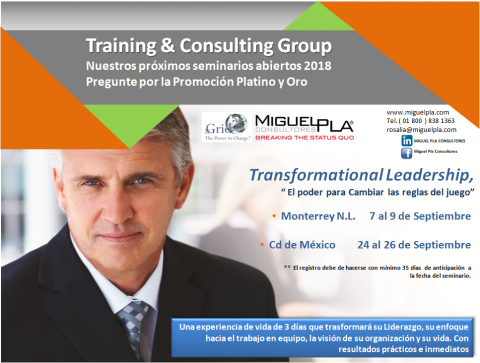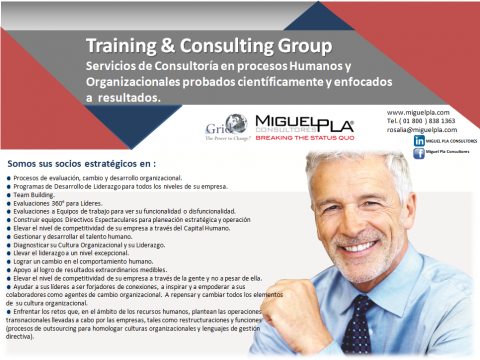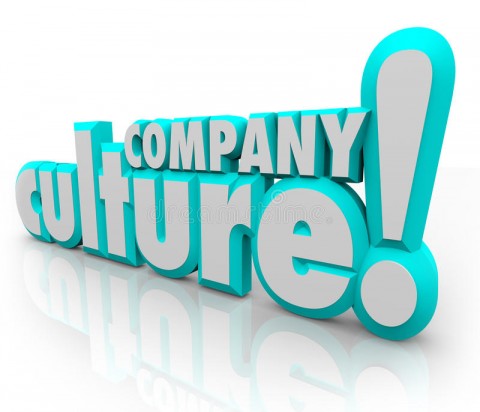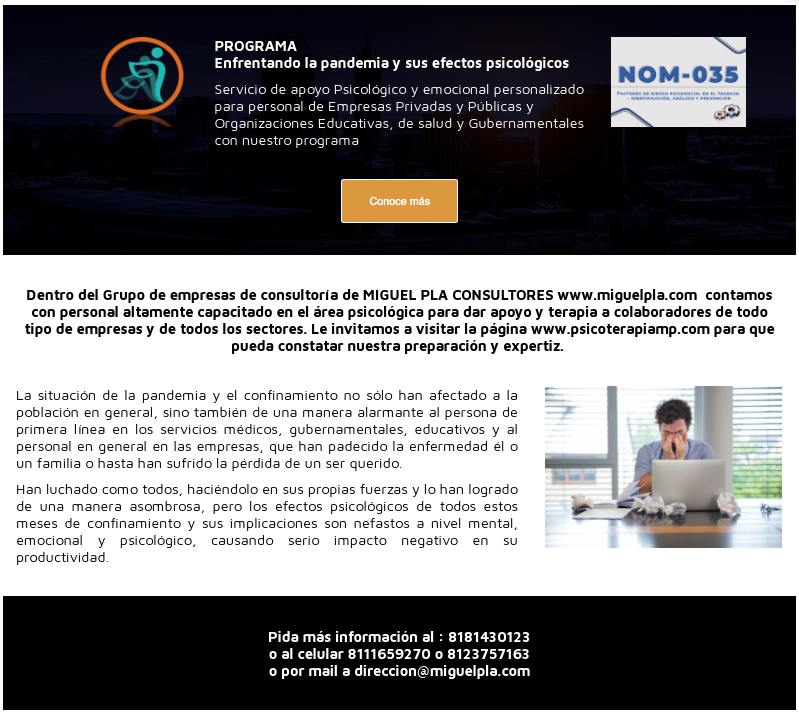Maximizing Critique
Critique is the most valuable skill available for building capacity and culture change but is so often underused or misused.
People often think of critique as an innate gift to which people may be predisposed at birth. The truth is that critique is simply a skill, like a muscle, that needs exercise and practice.
Critique gives people the strength to make a sincere and meaningful contribution to an effort. What often separates a successful team from weaker ones is that even when team members are focused and driving toward a successful conclusion, they don’t lose sight of the need to slow down, listen, question, advocate, and reflect on what is actually happening between them. They are like a successful athlete who can simultaneously execute many difficult expressions of strength, timing, and speed, but who always retains balance for the next move. Any team in balance, whether in the boardroom or on the field, is truly a beautiful thing to watch, but it is even more exciting and rewarding to be a part of one. Successful teams can produce phenomenal results, but they always remain aware of their relationships and pay attention both to those that give them momentum and those that limit effectiveness.
Over time, critique builds a heightened awareness that provides a foundation of security, trust, and confidence. With this trust, people feel free to express themselves openly and without fear of ridicule or recrimination. They also feel free to express and explore anger and other emotions for deeper understanding and relief. In short, they use critique to minimize the stumbling blocks that prevent teams from enjoying a culture that maximizes performance and productivity.
Sound Critique in Teams
When sound critique occurs in teams, discussions lead to increased awareness, candor, creativity, and commitment—features that every team needs. Team members each bring a range of skills and experience together to create a unique mixture of creativity and strength. Members trust each other and feel a deep sense of fulfillment and commitment to a common and clearly understood cause. Despite the complex challenges they face, members operate with amazing speed, agility, and confidence, making accomplishments look natural and easy to the outsider. They gain a reputation of strength and resilience, and inspire other teams to learn how they do it.
There are two basic approaches for critique in team activities:
- Conclusion Approach: When a decision is needed. When decisions are required, critique takes on a focused approach where discussions are meant to converge into one best perspective, opinion, or answer. This approach narrows discussion so that people use judgment and evaluation to define clear direction and strategy. For example, a team may use the conclusion approach to resolve a sudden, unexpected problem that threatens a crucial deadline. The conclusion approach is often the most popular and sometimes the only critique used by teams.
- Discovery Approach: When ideas and understanding are needed. The purpose of this discussion is more of a dialogue approach where teams gather information and explore multiple perspectives, possibilities, opinions, and answers. This approach opens up discussions for multiple views without the need for an immediate decision or course. This approach is most effective in the early stages of planning when teams are evaluating available resources, possibilities, and creative or alternative courses of action. For example, a team may use the discovery approach to brainstorm ideas for a new product or marketing strategy.
These two approaches do not present an either/or choice. There are times when both are needed in the course of the same discussion, making the distinction even more challenging. Practice pays off when learning to distinguish the two so that teams can “change gears” mentally when needed. Over time, teams learn to slow down and open up the process enough to practice the discovery approach when needed without losing productivity. They can also bring in the discovery approach to exercise judgment and evaluation to narrow options into one best course.
Building a culture of candor is the only way teams can maximize both approaches, especially the discovery approach. Members need to trust each other and feel free to explore unconventional, even wild ideas without fear of recrimination. These early stages are also the best time to air reservations, doubts, and fears that could snowball into impasses once the team launches into its strategy.
The Four Types of Critique
There are four basic types of critique that teams can use to carry out either the conclusion or discovery approach.
Pre-Critique
Pre-critique addresses the fundamental question, “What are we doing and how are we going to do it?” This stage includes gathering the information needed to develop the best possible strategy. Many people feel more comfortable rushing into work because action just feels more productive than discussion or dialogue. Planning is seen to slow momentum, possibly risking even further delay. This “perpetual motion” attitude establishes the ready-fire-aim mentality where teams are too consumed with doing to stop and examine how they are going to work together.
In addition to gathering information and planning a strategy, pre-critique forces people to consider the impact of a strategy. The ready-fire-aim approach means taking on work now and “working out the details later.” When done effectively, pre-critique defines clear criteria for moving ahead prepared.
Pre-critique is the most logical place to practice the discovery approach so that all ideas, possibilities, reservations, and limitations are put on the table before strategy and actual implementation enters the picture. It’s also the best time to discuss fears, doubts, and reservations so teams understand how they could affect productivity. This is also where creativity is born and bred in teams.
Periodic Critique
Periodic critique is a schedule of discussion points that teams plan for certain intervals of progress. These preset critique points allow teams to commit ahead of time to stopping the flow of work to discuss the quality of progress. The schedule may be based on lengths of time (once a week) or on points of accomplishment (at the beginning of a work cycle). This might include setting a weekly meeting or conference call to discuss a project, ten-minute meetings at the beginning of every day, or quarterly sales meetings. Whatever the nature of the discussion, the preset schedule provides an opportunity to step back from the detail level of work to look at the larger, developing picture, and make adjustments as needed.
Concurrent Critique
Concurrent critique occurs spontaneously when someone involved “holds up a stop sign” to address a specific point. This might include calling attention to an immediate problem, making changes in a process or procedure, offering a new idea, or simply expressing reservations or doubts. Concurrent critique is critical for uncovering problems that occur outside the more structured forms of critique so members can prevent or reduce them. This approach demands more flexibility because it means interrupting a process whenever discussion is needed rather than waiting for a scheduled time. Concurrent critique is vital for synergy because problems are caught and resolved in real time, as they occur.
Concurrent critique is the most demanding form of critique for teams accustomed to the ready-fire-aim approach because it means halting momentum to examine how they are working. This is where teams must balance the conclusion and discovery approaches so that critical information can be gathered while considering progress.
In teams with a high level of candor and trust, concurrent critique provides for instant readjustment with minimal disruption to a course of action. In these cases, even subtle comments are often effective because trust and respect are so high in the relationships. If trust is low, a comment such as, “Wait a minute. Shouldn’t we check this against the original order?” can present a major disruption for a variety of reasons—resentment, office politics, or hidden agendas. But in a team with high trust, the reaction is objective and based on what is the best course. For example, “Oh yeah. You’re right, we need to take a look at this.”
Post-Critique
Post-critique involves evaluating an event after the fact and is often the only type of critique used in teams. People wait until after the fact and discuss why an activity succeeded or failed. In teams with low levels of mutual trust and respect, post-critique might be used as a platform for assigning blame and punishment. It can also be used as a platform for rushing into celebration and praise. In both cases, the team loses a valuable opportunity to use the experience to learn and improve effectiveness. In post-critique, examining what worked is as important as examining what didn’t work. In this way, teams can reinforce strengths and examine what caused problems.
Post-critique is most effective when it occurs as close to the event in question as possible so that the actions and impact remain fresh and relevant. The most useful comments are given in specific terms and describe actions that took place rather than focusing on personal accusations, blame, or good intentions.
Teams that reach less than expected results can use the discovery approach to find out what went wrong and why, and to develop a strategy for improvement. Teams that exceed expectations can examine why instead of becoming lost in celebration or complacency. A new resource may have developed that should be examined so teams can assure repeated success. Success may also have resulted from an underestimation of what they could accomplish, meaning they need to raise expectations next time. In either case, post-critique is valuable for keeping teams focused on continuous improvement.
Using Criteria to Build a Foundation for Critique
Criteria provide a foundation for critique by defining up front what teams plan to accomplish and how. Criteria can take many forms, like setting short- and long-term goals, or developing strategic plans and timelines. Criteria can also define emotional boundaries for discussions so that people feel free to speak up. For example, criteria for an open discussion of discovery may be that no one will be criticized for offering new ideas. Once established, these agreed-to criteria provide focus and allow people to move forward with common objectives.
Criteria are most effective when developed in the pre-critique stage where planning, goal setting, and strategies are mapped out. They can also be developed or revised as new learning occurs. They are then used throughout the work process to test the validity of goals and progress. Concurrent critique is especially effective in helping to maintain focus on the goals in place. “We don’t all need to be in this discussion. Can the two of you have a private meeting to work out the details?” With no criteria in place, such comments can be taken personally instead of being objective and focused on the most effective use of team resources and time.
Behaviors can also be addressed more effectively with criteria in place. If a meeting is running late because one person is talking too much, comments can focus on the criteria rather than the person. For example, if someone says, “You’re talking too much and we need to move on,” the recipient is likely to feel judged and insulted. However, with criteria in place, it’s much easier to say, “We agreed to cover 15 topics; discussing this level of detail is putting us behind.” The latter statement focuses on how the behavior impacts the goals.
Criteria are most useful for critique when they remain vivid in people’s minds. Writing down criteria, posting them in a visible place, and revisiting them regularly makes them real and tangible to those involved in a discussion or meeting.
Critiquing Personal Behaviors
A good climate for learning from critique (includes having) explicit norms for creating an open sharing of agreement about the purposes to be achieved, creating and maintaining a problem-solving rather than win/lose environment, inviting confrontational feedback, and making it legitimate to express feelings and emotions.
– Drs. Robert R. Blake and Jane S. Mouton
Critique is most difficult when it addresses personal behavior. Most people follow the old adage, “If you don’t have anything nice to say, then don’t say anything at all.” The truth is, if you are in a room full of 20 co-workers commenting on your work and all comments are positive except one, which remark catches your attention most? Also, which comment often provides the most valuable personal learning? Negative comments, or “constructive criticism” as it is most often called, is the most valuable critique for learning and change. It is also potentially the most damaging, and so demands skill and understanding from all those involved.
The key to effective personal critique is to focus on actions and their impact without evaluating the person as “good or bad.” The only way a person can learn and change behavior is to understand how personal behavior affects people and results. Sound behavior critique builds candor without malice when comments are given out of a sincere desire to help.
The following list describes characteristics of sound critique that make it more effective to give and receive. When these criteria are used, everyone involved can discuss the subject with a more objective focus on personal improvement and increasing productivity.
- Evaluate actions, not people: Sound critique evaluates not people, but the behavior or actions they take and the impact these behaviors have on others. A statement such as, “You should not have done that…” passes judgment on a personal level and most likely would be met with defensiveness, resistance, and even anger. A statement such as, “When you interrupted me, I felt distracted and it made me angry” does not evaluate the person, but rather the behavior. In addition, it makes a statement about the impact of the behavior. The person then understands how that specific behavior affected someone else without the personal implications of “judgment.”
- Predict consequences: Focus on predicting consequences rather than making moral judgments that indicate acceptance or rejection. Describe the behavior observed and what the consequences would be if the same behavior continues or changes. For example, “If you continue to involve yourself in the day-to-day activities of your department managers, you risk starting a cycle where they depend on you too much.”
- Focus on the here and now: In any situation where feedback and critique occur, the most effective comments relate to immediately observable, here-and-now events. Here-and-now critique has the advantage of using specific examples that are fresh and vivid. For example, by saying, “Your positive comments this morning helped me focus on the next phase of the project with confidence,” the person gets immediate feedback about what works well. Capturing feelings while they are fresh also provides a more immediate and timely understanding of how behavior impacts others. Even anger and frustration help focus discussions by capturing the feelings that the behaviors cause. For example, if a person can say, “When you contradicted me without taking the time to get all of the information, I felt cheated,” then he or she feels immediate relief, and the other person understands the impact of the behavior.
The exception to the effectiveness of here-and-now critique is when tempers are so high that people cannot discuss issues objectively. One or both people may be so angry that they risk doing more damage than good by immediately confronting the situation. A temporary cooling-off period may be necessary to give people a chance to gather thoughts and express them more objectively. This may take an hour or a day, depending on the people and the situation. The key to making the cooling-off period work is to use the time to gather thoughts so that discussions can be objective. The emotions are valuable and should be expressed, but in a way that encourages an open, two-way discussion.
- Use specific examples: Use specific examples when discussing behavior so people understand exactly where the negative impact is occurring. “I think you’re unqualified,” is non-specific and abrasive. “This is the third time today you have asked for help with this. Do you feel comfortable with these responsibilities?” This is specific, objective, and helpful.
- Establish criteria: Teams can use criteria for giving behavior critique the same way they use it to set productivity and financial standards. These criteria establish boundaries and keep discussions focused on actions and their impact on team members and results. They also help teams practice critique skills without feeling threatened. Criteria can center around inquiry (we will focus questions on what happened during today’s meeting only), or on listening (we commit to suspending judgment until all views are discussed), or on authority (the team leader’s view will be given last to ensure all views are heard). These are only a few examples, and they may change as teams develop critique skills and build confidence and trust in each other.
Effective Listening Skills
“Valid listening happens only when what the listener thinks the speaker said conforms with what the speaker intended to convey. This does not mean that what the speaker says is devoid of biases, prejudices, preconceptions, preoccupations, or win/lose attitudes. It means that the listener “hears” these themes according to the speaker’s self-understanding of what is said. The listener may or may not accept them or agree with them, but they are understood.”
– Drs. Robert R. Blake and Jane S. Mouton
A central feature of sound critique is to create a two-way process of talking and listening with the clear intention of learning. Trying to practice critique without effective listening is a bit like being in a country where you do not speak the language. You may be able to pick up a few words here and there, but you will never really “hear” and understand the nuances of conversation unless you know the language.
Listening is another casualty of a fast-food, ready-fire-aim culture. People think they are listening, but instead they are collecting thoughts to prepare a rebuttal or listening for ways to promote their own view. They are listening to rebut, not to learn. There may be a great deal of mental activity going on, but none of it is truly listening.
The only effective way to listen is to slow down, suspend reaction and evaluation while someone is speaking, and give that person undivided attention. Sincere listening, especially by people in positions of authority in the workplace, honors the person speaking, and encourages him or her to be clear, direct, and succinct.
And it’s not easy. For people accustomed to being in control and winning ideas, slowing down and truly listening is difficult, to say the least. To listen effectively, you must put yourself “in the shoes of” the other person and listen to the speaker’s ideas and comments with respect and objectivity. To take it one step further, allow yourself to be influenced by what is being said, even if—especially if—you disagree. This level of empathy is even more important if you are the team leader, because your intentions shape the tone and character of discussions. If you are open and empathetic, other team members take that as a cue to be open themselves.
The objective of critique is to obtain as much information as possible for consideration. This requires thinking through questions and responses more thoroughly ahead of time. If time does not permit the thorough discussion that is needed, then delay the discussion. If an interruption prevents listening, then explain the circumstances and make arrangements to follow up.
Judgment is the First Enemy of Listening
Sound listening requires suspending judgment to remain truly objective while hearing another view. Judgment can immediately divert energy needed to focus on what is being said. True listening is hindered and weakened when people evaluate, form counter arguments, or simply tune out. For most people, suspending judgment is like asking them to stop breathing. We are so accustomed to listening defensively that turning off that mental reaction feels impossible. This is where practice pays off. The key is not to turn off judgments, but to learn to suspend them, withhold reaction, and remain open while listening. Warning: suspending judgment becomes more difficult when the issues under discussion collide with deeply held convictions or fears. Make yourself aware of your own judgmental reactions so you can learn to control them and gather all possible views.
Judgment and evaluation are vital for leadership, but there are appropriate and inappropriate times to use judgment. The goal for sound critique is to manage both so that a larger, collective view and truly creative ideas can be considered when needed. To practice suspending judgment while listening, follow these key steps:
- Monitor your emotions. As soon as you feel a strong negative reaction flare up in response to a statement that strikes you as “wrong, bad, ridiculous, etc.,” make yourself slow down, suspend judgment, and listen. Such strong reactions may even point to your own personal assumptions or prejudices that may keep you from listening objectively.
- Ask, don’t interrogate. Use open-ended questions that open up rather than narrow discussions. This is especially vital if you are in a leadership position. People learn every subtle cue from the leader’s tone, body language, and other actions that convey intentions. If they sense defensiveness or disapproval, it may alter an answer, and certainly affects candor.
- Encourage the speaker to talk more. Listening conveys respect, and people know when they are being heard because they can feel the other person’s attention. For example, look at the person with comfortable yet direct eye contact, smile, nod understandingly, and say, “Yes, go on.” Include “tell me more” expressions and body language like unfolding your arms and facing the person directly.
- Try to understand the speaker’s point of view, even if (especially if) you don’t agree. This may mean asking questions or restating what the speaker said to ensure correct interpretation. For example, “Let me be sure I understand what you’re saying…” and then repeat in your own words what you’ve heard. In addition to verifying your own understanding, it gives the speaker the chance to correct any misconception you may have.
Critique Listening Skills on an Ongoing Basis
You, as a speaker, are also in a position to aid others in effective listening. For example, if a listener begins to thumb through a notebook while you are speaking, you might say, “Are you still with me? I was afraid I lost you when you began looking through your notebook.” Some listeners are more attentive when the subject matter is more interesting or challenges them personally. “When we were discussing the budget, you leaned over the table and made eye contact, but since we moved on to marketing, you keep checking your watch.” This type of critique increases awareness and strengthens the ability to listen effectively.
Developing Candor
The level of openness and candor among team members directly impacts the ability to clarify and resolve problems. Candor cannot be forced or imposed but, like trust, it has to be earned and can only develop over time as people practice sound and objective critique skills. As people become confident that comments are sincere, honest, helpful, and intended to increase effectiveness, they feel more willing to speak up.
Authority plays a paramount role in promoting candor. Leaders set the standard by how objectively they give and receive critique. A leader, for example, who complains that people don’t speak up has to seek out opinions through sound inquiry and listening skills. When comments are given, the leader encourages candor by acknowledging and considering the opinions based on merit, not rank.
The Candor illustration, which will be familiar from your individual Grid experience, shows the typical progression of candor that develops as teams begin using and becoming comfortable with critique.
Summary of Critique
Many teams resist deliberately incorporating critique into activities because they have an image of unproductive, lengthy conversations that slow progress. Even the word “critique” sometimes brings sighs of resignation at falling behind schedule. However, when critique is used effectively, quite the opposite is true. Effective critique increases efficiency in every aspect of work. With sound critique, a lengthy meeting with every team member pulled off-line can easily become a five-minute phone call or a meeting among only a few people.
Critique provides the most powerful tool for learning from experience in the workplace. By establishing sound criteria and candor, teams build the trust and respect needed to maximize resources. The climate of awareness generated by critique allows teams to function at a higher, more effective level by moving quickly to define goals and objectives and address and resolve problems. By making the best use of critique, companies and teams can gain several advantages.
- Sound team action increases as members learn to identify and resolve doubts and reservations.
- Team involvement and commitment increase because members have an opportunity to understand and contribute to defining objectives.
- Many problems never arise because critique allows people to anticipate and eliminate potential problems more accurately.
The benefits of critique for learning from experience are self-convincing. Critique allows people to take responsibility for resolving their own problems. As a result, people take ownership of solutions and have deeper commitment and fulfillment when the results are positive. When results are less than expected, members can still feel confident that they gave it their best effort, and can “learn from the experience.”
Critique and candor skills are at the heart of our change management methodology. The first step in any chance process is to have a clear understanding of what you want to change, where you are now. With this insight, our candor skills and transformation process provide a clear path to change. For more information, www.miguelpla.com












 A norm is any uniform attitude or action that two or more people share by virtue of their membership in a group. We experience our attitudes toward productivity as private and personal, as originating in our own thinking, experience, and motivation, and as unique to each of us. What we fail to realize is that our attitudes arise from the norms of the groups in which we hold memberships. As a result, group norms for productivity and our attitudes toward them regulate a greater part of our work effort or lack of it than we realize.
A norm is any uniform attitude or action that two or more people share by virtue of their membership in a group. We experience our attitudes toward productivity as private and personal, as originating in our own thinking, experience, and motivation, and as unique to each of us. What we fail to realize is that our attitudes arise from the norms of the groups in which we hold memberships. As a result, group norms for productivity and our attitudes toward them regulate a greater part of our work effort or lack of it than we realize.







